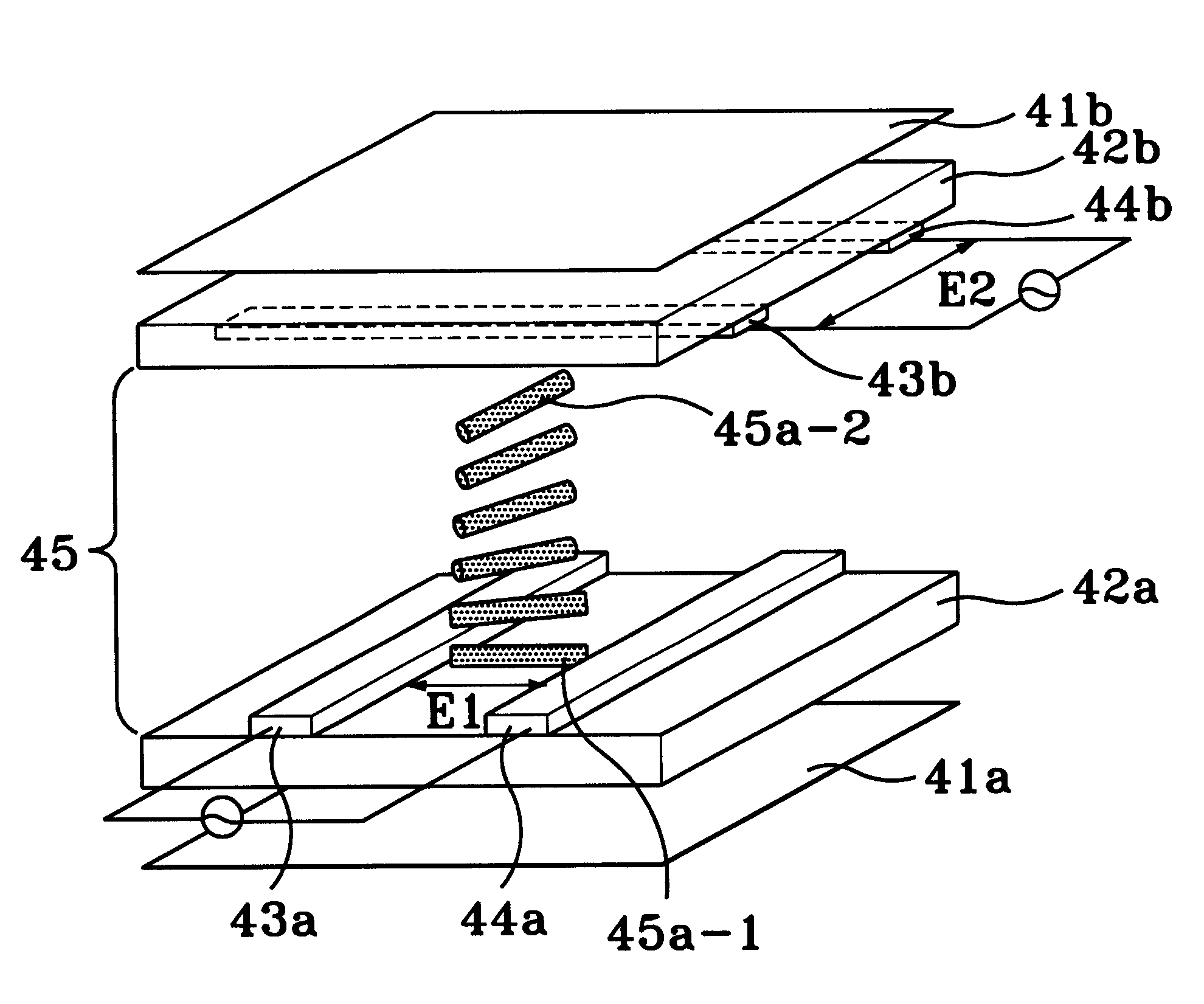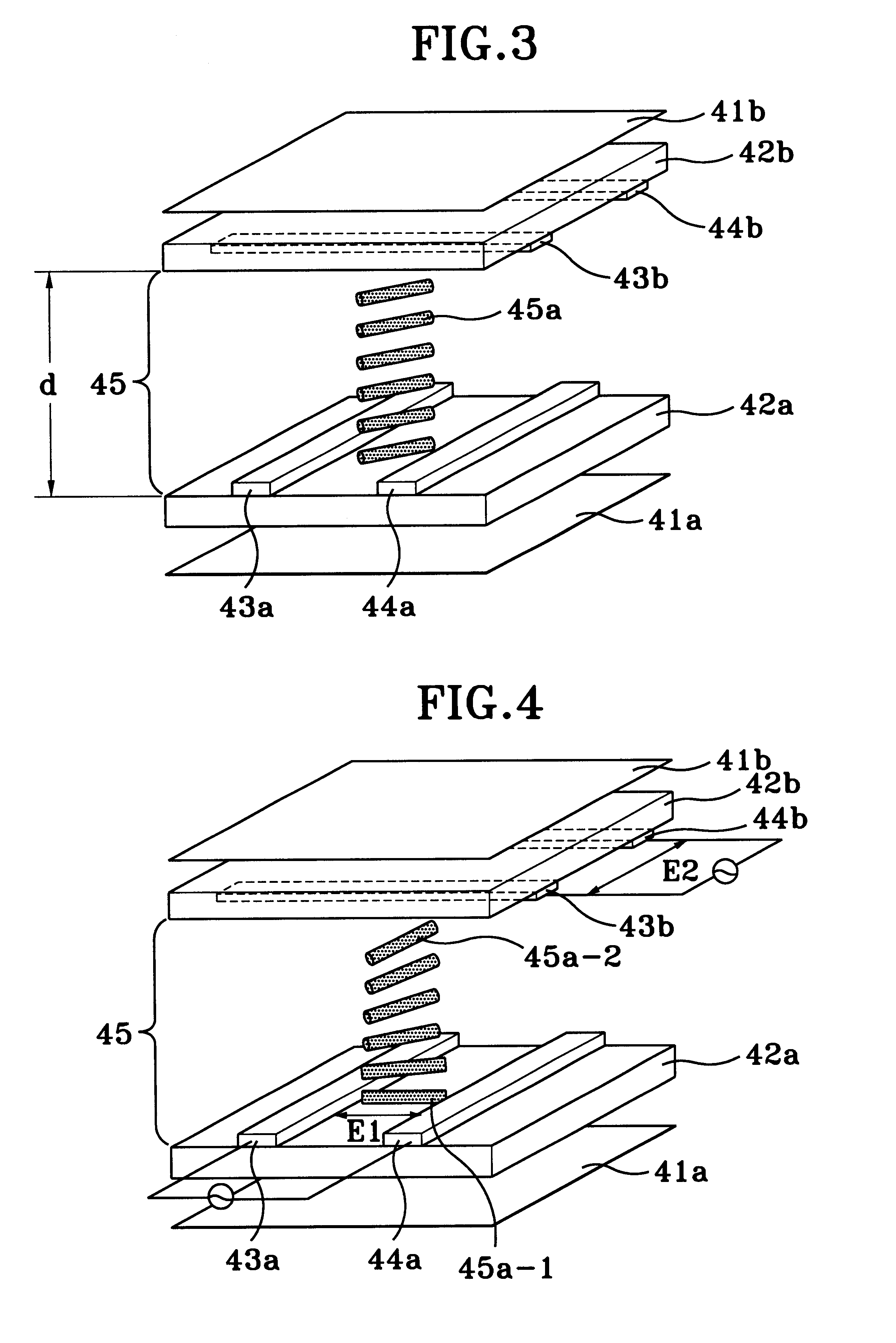IPS LCD having molecules remained parallel with electric fields applied
a technology of electric field and ips, applied in static indicating devices, instruments, non-linear optics, etc., can solve the problem that the best angle of view cannot be set in the direction normal to the plane of glass substrates, and achieve the effect of wide view angle characteristic, improved response time and transmittan
- Summary
- Abstract
- Description
- Claims
- Application Information
AI Technical Summary
Benefits of technology
Problems solved by technology
Method used
Image
Examples
Embodiment Construction
Hereinafter, a preferred embodiment of the present invention will be explained in more detail with reference to the accompanying drawings.
FIG. 3 shows a liquid crystal cell with a IPS mode when a voltage is not applied to the cell, according to an embodiment of the present invention. FIG. 4 shows the liquid crystal cell shown in FIG. 3 when a voltage is applied to the cell.
In FIG. 3, on the outsides of a first and second substrates 42a and 42b, an polarizer 41a and an analyzer 41b are arranged, respectively. The polarization axes of the polarizer 41a and analyzer 41b are orthogonal to each other. On the first substrate 42a, a first pixel electrode 43a and a first counter electrode 44a are formed so that they are spaced with a selected distance and are parallel to each other. On the second substrate 42b, a second pixel electrode 43b and a second counter electrode 44b are also formed so that they are spaced with a selected distance and are parallel to each other. The second pixel elec...
PUM
| Property | Measurement | Unit |
|---|---|---|
| angle | aaaaa | aaaaa |
| pretilt angle | aaaaa | aaaaa |
| pretilt angle | aaaaa | aaaaa |
Abstract
Description
Claims
Application Information
 Login to View More
Login to View More - R&D
- Intellectual Property
- Life Sciences
- Materials
- Tech Scout
- Unparalleled Data Quality
- Higher Quality Content
- 60% Fewer Hallucinations
Browse by: Latest US Patents, China's latest patents, Technical Efficacy Thesaurus, Application Domain, Technology Topic, Popular Technical Reports.
© 2025 PatSnap. All rights reserved.Legal|Privacy policy|Modern Slavery Act Transparency Statement|Sitemap|About US| Contact US: help@patsnap.com



